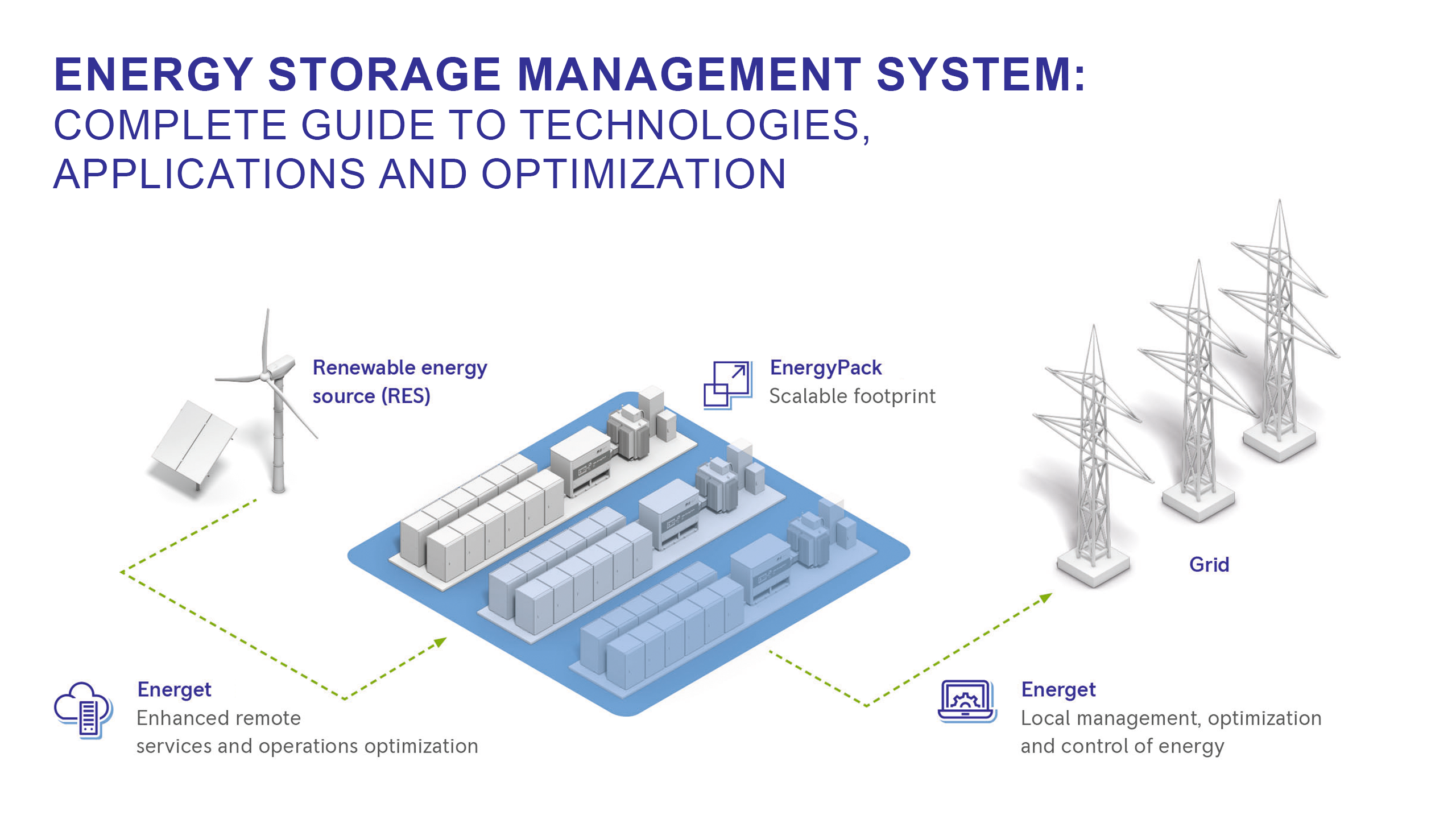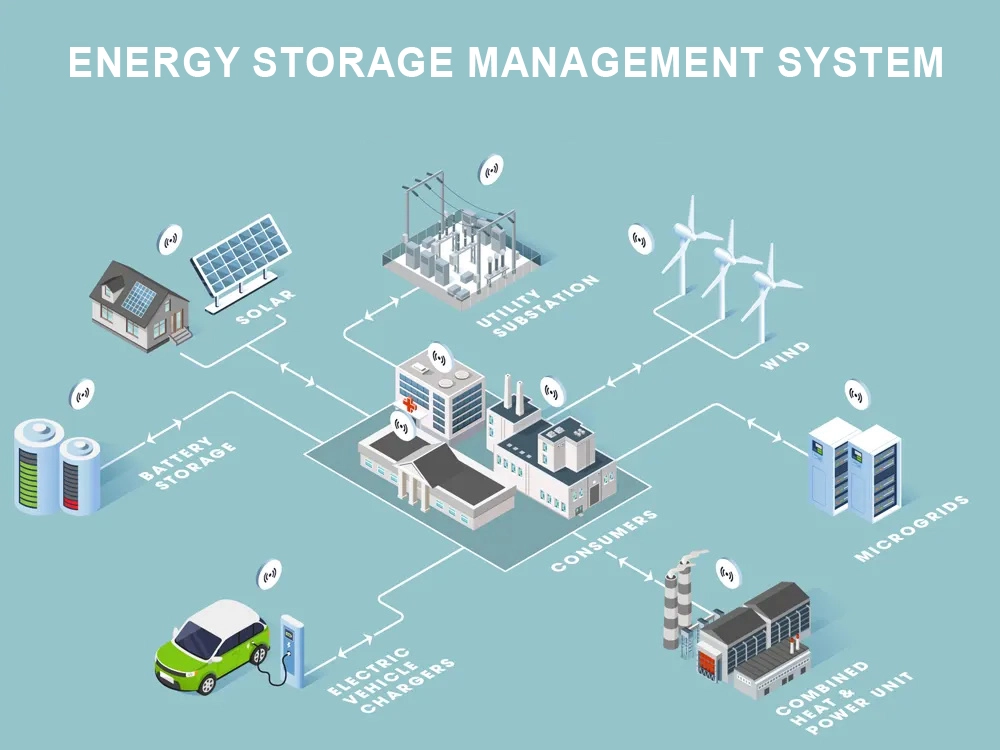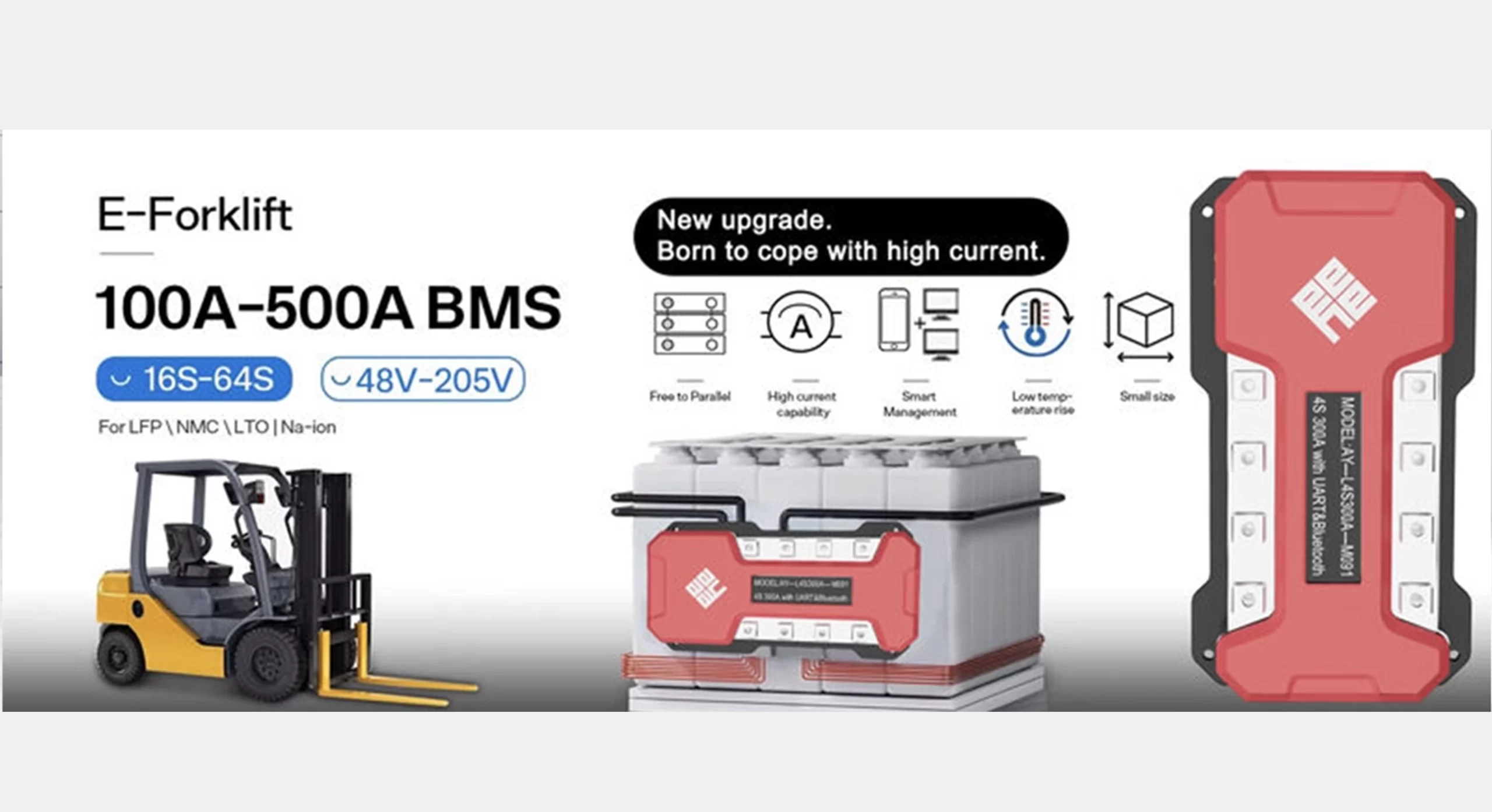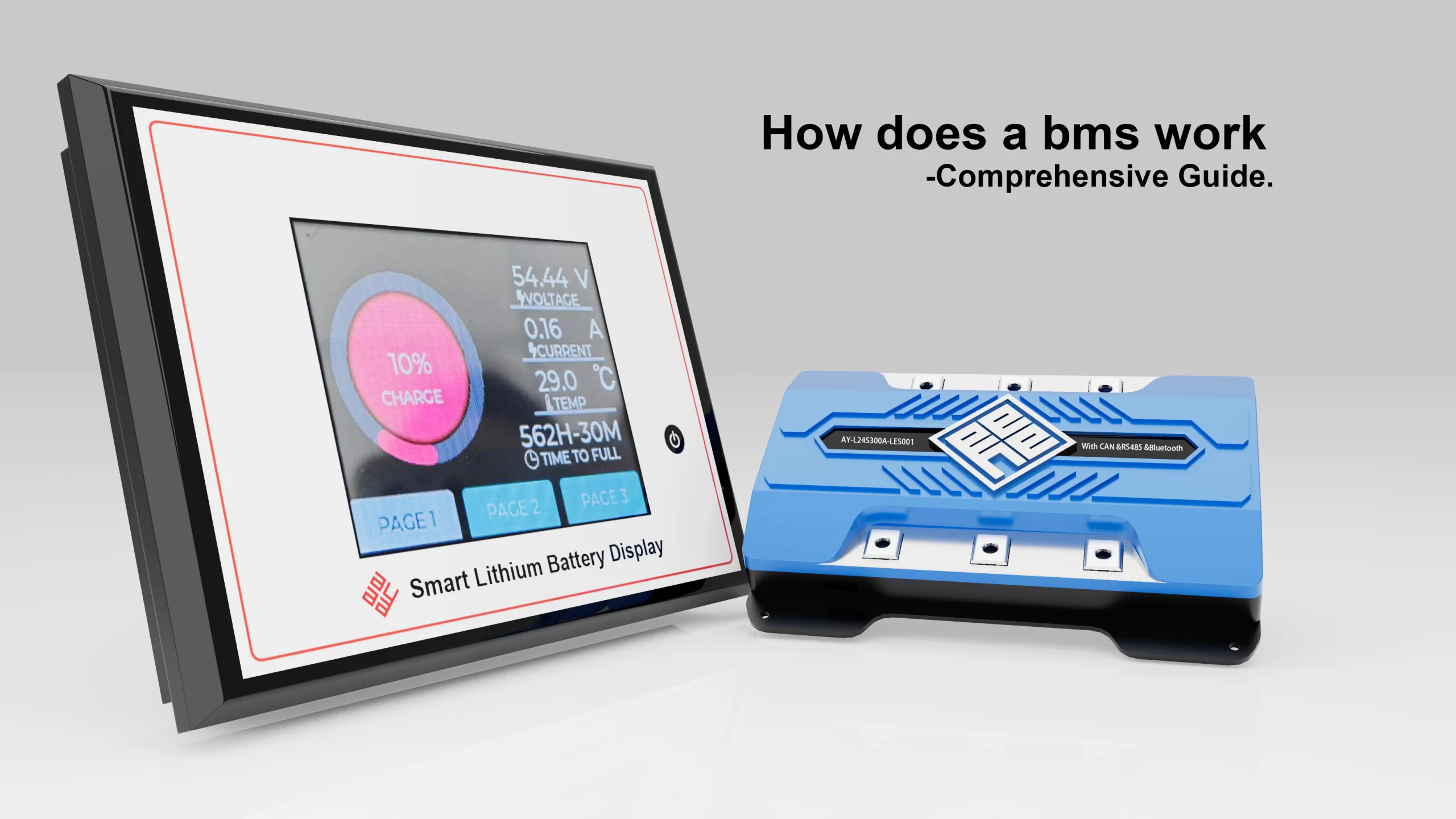ホームページ About Us EVENTS & NEWS Energy Storage Management System: Complete Guide to Technologies, Applications and Optimization
Energy Storage Management System: Complete Guide to Technologies, Applications and Optimization
Energy Storage Management System: Complete Guide to Technologies, Applications and Optimization
What Is an Energy Storage Management System (ESMS)?
An Energy Storage Management System is an intelligent software platform that optimizes the charging/discharging cycles, safety protocols, and performance analytics of battery storage systems.
Acting as the “brain” of energy storage infrastructure, it integrates hardware components with data-driven algorithms to ensure peak efficiency.
Unlike basic controllers, ESMS solutions like Tesla’s Autobidder or Fluence’s AI-driven platforms enable predictive maintenance and grid service monetization.

How Do Energy Storage Systems Work? A Step-by-Step Breakdown
- Energy Capture
-
- Solar panels/wind turbines feed DC electricity to batteries
-
- Grid power converts AC to DC via rectifiers during off-peak hours
-
- Storage Phase
-
- Lithium-ion/NiMH batteries store energy at 90-95% round-trip efficiency
-
- Liquid cooling systems maintain optimal 20-25°C operating temps
-
- Discharge Process
-
- Inverters convert stored DC to AC power
-
- Smart relays prioritize critical loads during outages
-
- Continuous Optimization
-
- IoT sensors track state-of-charge (SOC) and depth-of-discharge (DOD)
-
- Machine learning adjusts cycles based on weather forecasts/price signals
-
What Are the Key Components of an ESMS?
-
- Battery Management System (BMS) – Monitors cell voltage/temperature with ±0.5% accuracy
- Power Conversion System (PCS) – Achieves 97-99% conversion efficiency using SiC semiconductors
-
- Energy Management Software – Uses mixed-integer linear programming for cost optimization
-
- Thermal Regulation – Phase-change materials absorb excess heat during rapid charging
-
- Cybersecurity Layer – Implements NIST SP 800-82 standards against grid cyberattacks
Why Are ESMS Critical for Renewable Energy Integration?
ESMS resolves the duck curve challenge in solar-rich grids by:
-
- Time-shifting excess daytime solar to evening peaks
-
- Providing 50-100ms frequency response during cloud cover events
-
- Enabling virtual power plants through aggregated distributed storage

What Are the Real-World Applications of Modern Energy Storage Systems?
-
- Grid Stability – Deployments like Australia’s Hornsdale Power Reserve (150MW/194MWh) provide 450ms frequency control to prevent blackouts.
-
- Microgrids – Alaska’s Cordova ICEStor project uses cryogenic storage to achieve 98% uptime in extreme climates.
-
- EV Charging Hubs – Tesla’s Megapack buffers 1.2MWh at Supercharger sites, cutting grid upgrade costs by 60%.
-
- Industrial Load Shifting – Cement plants use ESS to reduce $250k/month demand charges during 4-9pm peak windows.
How to Design an Efficient Energy Storage System: 5 Critical Factors
- Battery Chemistry Selection
-
- Lithium-iron-phosphate (LFP) for 8,000+ cycles vs. NMC for high energy density
-
- Redox flow batteries for >20-year lifespan in stationary apps
-
- Thermal Runaway Prevention
-
- Ceramic-coated separators delay ignition by 15 minutes (UL 9540A test data)
-
- Modular Architecture
-
- Fluence’s 20ft Cube allows 500kWh increments with <3% balance-of-system losses
-
- Efficiency Validation
-
- Third-party testing per IEC 62933-2 for round-trip efficiency claims
-
- Cybersecurity
-
- Hardware-enforced TLS 1.3 encryption for SCADA communications
-
What Operational Challenges Do Energy Storage Systems Face? (And How to Solve Them)
| Challenge | Data-Backed Solution |
|---|---|
| Cell balancing errors | AI-driven BMS detects ±2mV voltage drift across 10k+ cells |
| Calendar aging | Nickel-rich cathodes reduce capacity fade to 1.5%/year (NREL 2023 study) |
| Fire risks | Argon suppression systems extinguish Li-ion fires in <60 seconds |
| Regulatory hurdles | UL 1973-certified systems streamline AHJ approvals by 8 weeks |
Can You Optimize ESS for Maximum ROI? 3 Proven Strategies
-
- Price Arbitrage – Charge during $25/MWh overnight lows, discharge at $180/MWh evening peaks (CAISO 2024 data)
-
- Ancillary Services – Earn $55/kW-year for 10-minute fast frequency response (UK Dynamic Containment)
-
- Demand Charge Management – Slash commercial bills by 30% using predictive load algorithms (Schneider EcoStruxure case study)
ROI Calculation Example:
-
- Initial cost: $400/kWh
-
- Annual savings: $120/kWh
-
- Payback period: 3.3 years (pre-ITC)
How Will Future Energy Storage Management Systems Evolve?
Emerging innovations set to transform ESS operations by 2030:
-
- Solid-State Batteries – QuantumScape’s prototypes show 80% capacity retention after 1,000 cycles at 4C rates
-
- Self-Healing Grids – Auto-reconfiguration algorithms restore power in <100ms during feeder faults
-
- AI Co-Pilots – Google’s DeepMind reduced Googleplex cooling costs by 40% via neural network-based ESS control
-
- Blockchain Trading – Brooklyn Microgrid’s transactive energy platform enables peer-to-peer solar storage sales
Conclusion
Energy Storage Management Systems (ESMS) have emerged as the critical intelligence layer bridging renewable energy generation with reliable power delivery.
As demonstrated throughout this guide, modern ESMS solutions combine advanced battery technologies with AI-driven software to address everything from millisecond-level grid stabilization to multi-year ROI optimization.
The integration of components like precision BMS monitoring, high-efficiency PCS conversion, and predictive thermal management enables these systems to solve pressing energy challenges – whether preventing blackouts in Australia, reducing industrial demand charges by 30%, or enabling peer-to-peer energy trading in Brooklyn.
Looking ahead, innovations in solid-state batteries, self-healing grids, and blockchain integration promise to further elevate ESMS capabilities.
What makes today’s energy storage management systems truly revolutionary is their.
SHARE
News Recommend
-
How does AYAATECH BMS work in E-scooters
01/16/2025 -
2024 battery show in Detroit,USA.
10/08/2024















